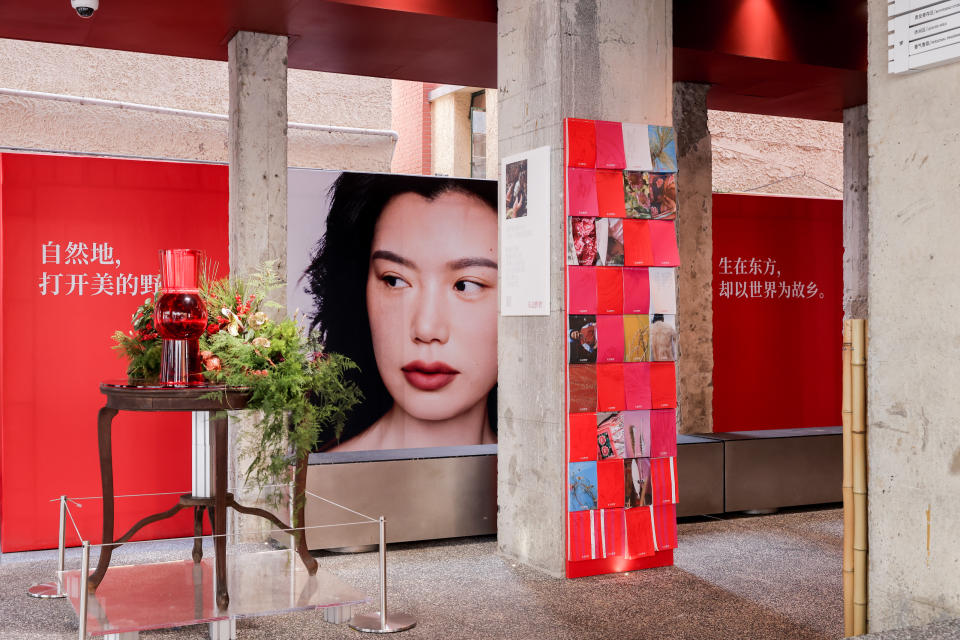Prestige Brands to Lead China’s Beauty Market Growth in 2023
- Oops!Something went wrong.Please try again later.

SHANGHAI — After a year of lockdown disruptions, China’s beauty market is poised to resume rapid growth in 2023.
Euromonitor International projects China’s beauty and personal care market will grow 5 percent to $98 billion in 2023.
More from WWD
Excluding travel retail and duty-free shopping, Bernstein predicts that beauty spending per capita will approach that of South Korea and Japan, driven by growth in the premium and mass market segments, which are expected to see 13 percent and 8 percent annual growth separately for the next five years.
Euromonitor estimates that the premium market will surpass the mass market in 2026.
Established prestigious brands weathered the lockdown storm and registered stellar growth in the first 11 months of 2022, according to data compiled by Bernstein. The top five prestige skin care brands in terms of sales growth on Tmall, Taobao and Douyin combined were Chanel, Guerlain, Sisley, La Mer and Helena Rubinstein.
“As China gradually recovers, we expect premium cosmetics to be better positioned to capitalize on the consumption recovery,” Bernstein’s Melinda Hu wrote in a recent report. “Foreign cosmetics brands should see more resumption than domestic brands, driven by offline recovery.”
COVID-19 has also impacted how Chinese consumers are thinking about the treatment category. “The perception of skin care is also gradually changing from appearance to a part of holistic wellness,” said Yang Hu, insights manager of health and beauty Asia at Euromonitor.
“Consumers are becoming more rational in purchasing, changing from brand worship to the principle of ‘efficacy comes first.’ Consumers will pay more attention to the emotional value creation of a brand to show identities, such as the rising of ‘Guo Chao’ (Chinese fashion), minimalism, gender equality and sustainability,” Hu added.
According to Jeacy Yan, founder of Being Capital, brands that focus on singular ingredients and tackle issues such as face mask-induced skin sensitivity and acne will be in high demand. “In terms of acne treatment, acid exfoliants are still the mainstream solution, but more fermented, plant-based ingredients will replace traditional acids such as AHA and BHA, to achieve a more gentle effect.
Sunscreen that can whiten are also popular, said Yan, listing Winona, La Roche-Posay, QuadHA and Skinceuticals as well-known brands in the space.
Young consumers will continue to drive antiaging product sales. “Eighteen- to 25-year-olds are not even aging but they are already using antiaging products. To them, it’s less about product efficacy but more about how they experience the brand, such as the product packaging, the texture of the product,” said Miriam Bray, managing director of Joyce Beauty China and chief executive officer and founder of Chrysalis Beauty, the licensee of Joyce Beauty in mainland China.
Even as prestige brands solidify their presence, mass brands are not going away. Despite a slew of brands shutting down online operations or exiting the market altogether in 2022, including E.l.f., Too Faced, Huda Beauty, Glamglow and Etude House, beauty players equipped with market know-how and fast-paced product releases were able to survive the pandemic intact.
Local skin care upstarts that emerged from the 2019 beauty boom, such as HBN, Zhiben, Simpcare and Uniskin, topped the 1 billion GMV mark with products priced on average below 200 renminbi or $29, according to data sourced by Being Capital.
For Bray, despite a “very strange 2021 and 2022, where e-commerce grew like wildfire and created almost a vicious cycle,” the C-beauty boom is not over yet.
“Local C-beauty brands have already occupied a certain market share in the mass market. The growth space is already limited due to market saturation, so brands have started to focus on the premium market to find new growth drivers,” Hu said.
Bray noted that a new generation of entrepreneurs arose during COVID-19. “The pandemic was like a perfect storm; there was a lot of hot money because people in the capital market couldn’t actually travel outside of China. Then you had a lot of young talent who previously studied overseas but got drafted back to China, so you have this talent pool armed with exposure, armed with some money from their parents, and most importantly, a true understanding of Chinese consumers, even more than LVMH or L’Oréal.”
Bray was referring to emerging high-end brands that have blown up in size and scope in the last few years, including Documents, the fragrance brand launched by Zhaoran Meng in 2021, and the skin care brand Herbeast, founded by Yi He in 2020. Both founders studied or worked in Paris before gaining experience at top beauty retailers in China.
Herbeast is the only C-beauty brand stocked at Joyce Beauty, alongside popular prestige labels including Augustinus Bader, 111Skin and Evidens de Beauté.

As opposed to an online-focused marketing strategy to drive sales, both Documents and Herbeast, whose prices range from 500 renminbi to 1,000 renminbi, took a brick-and-mortar first approach to retail, with a focus on a localized aesthetic and community building.
Last September, L’Oréal’s China Fund took a minority stake in Documents, marking its first investment in a Chinese brand.
More brands are also betting on a brick-and-mortar revival. In the last year, brands such as Charlotte Tilbury, The Ginza, Florasis, Julydoll, and fragrance brands To Summer and Documents all accelerated their offline presence in the market.
Aesop opened two stores in China last year, for example, while Sisley opened its first Asian flagship, Maison Sisley, in January at Shanghai’s Zhang Yuan retail complex, which incorporated a spa and café. Skinceuticals opened its first Skinlab, a monobrand store and facial treatment center in Shenzhen last December.
Meanwhile, multibrand beauty stores such as Sephora, Harmay, SKP Select Beauty and Bonnie&Clyde continued to reinforce their retail presence to encompass niche beauty brands.

“Offline retail has come back to the limelight; shopping becomes a nice byproduct of a coffee date. It’s something nice to have but not the main objective,” Bray said. “In a way, niche brands will have a relative advantage because it’s new, it needs to be tried on, or experienced. But people still might go back home then place the order online, so omnichannel is key.”
At Joyce Beauty, which targets consumers from 25 to 32 years old, Bray is focused on creating an immersive retail experiences that will help establish consumer loyalty to the store itself, not just a brand. “Beauty retail has always been traffic-driven, but we want to create a true connection,” Bray said.
Shopping festivals, now encompassing offline and online retail, will be the main driver of sales. According to Elena Gatti, managing director at Azoya Europe, Women’s Day next month, 5/20 Valentine’s Day in May, 6/18 shopping festival in June and finally Singles’ Day in November, will be important touch points to reach consumers.
“Many brands starts building momentum for Singles’ Day in July or August. If they accumulate enough clout and influence by October and November, they will see actual sales conversion,” Gatti said.
Best of WWD

